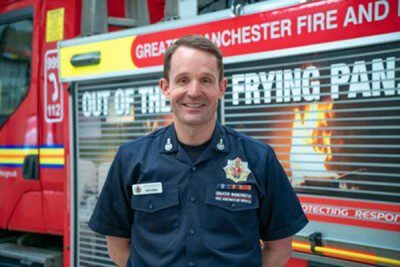Protection Committee
The Committee will:
- Support the national response to the Grenfell Tower Fire, including the outcomes of the Independent Review of Building Regulations and Fire Safety. This work is supported by the NFCC’s Protection Reform Unit and Policy Team. Find out more about the Protection and Building Safety work here.
- Improve the provision of a standardised approach to Protection policy, training and development to increase capacity and competence to deliver protection work.
- Promote further reform of safety legislation and contribute to the revision of specific Building Regulations as appropriate and other national technical standards.
- Provide additional support and guidance to business and continue to improve engagement, regulation and enforcement to improve safety and support economic development and growth. This includes a particular focus area within this work that supports Black and Minority Ethnic Businesses.
- Focus upon improving core fire and safety outcomes and commit to reducing operational demand across key indicators.
- Work with businesses, the fire detection industry and alarm receiving centres to reduce unwanted fire alarm signals, making use of electronic data transfer and new fire alarm technology
- Continue to work with Government departments, Devolved Administrations, Regulatory Delivery, Fire Sector Federation, Fire Protection Association, Association of British Insurers, Health and Safety Executive, businesses and others to promote improved fire safety outcomes, and minimise the cost of fire.
- Work with the design, construction and building standards sectors to improve the safety, sustainability and fire performance of buildings and building materials, and improve modern methods of construction.
- Improve inter-service and inter-agency fire investigation policy, procedures and the sharing of information and intelligence.
- Develop improved communication links, information exchange and intelligence sharing with other enforcing authorities at local and national level.
Workstreams
- Building Safety Programme
- Fire Engineering and Technical Standards
- Competency of Protection and Business Safety Staff
- Automatic Fire Alarms/Unwanted Fire Signals
- HMICFRS and Inspection Outcomes
- Fire Investigation
- Business Engagement and engaging with diverse business
- Higher Risk Accommodation
- Sprinklers/Automatic Fire Suppression Systems
- Organisational Learning – Protection
- RBIP and High-Risk Premises
- Enforcement Working Group
- Comprehensive Spending Review
- SiteSafe and Timber Frame Group and Modern Methods of Construction
- Event Safety
- Petroleum & Explosives
- Heritage
- Waste fires
Committee Chair, Dave Russel
Dave joined GMFRS as Chief Fire Officer (CFO) in September 2020, after serving for 29 years in neighbouring Lancashire Fire and Rescue Service (LFRS).Since joining Dave has driven our cultural journey focusing on values, equality and serving the community of Greater Manchester. He has led the Service through the challenges of the Manchester Arena Inquiry with a resolute commitment to improvement, innovation, and staff wellbeing.
The HMICFRS inspection report, published in March 2024, was an indication of the progress he has made in leading GMFRS towards becoming an outstanding fire and rescue service.
Dave is Chair of the National Fire Service King’s Trust Association, Chair of the NFCC Protection Committee and the NFCC Lead for the National Training Managers Forum.

